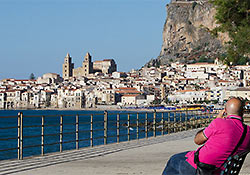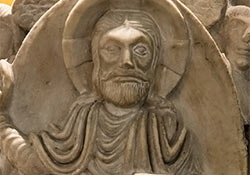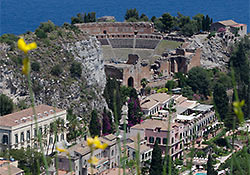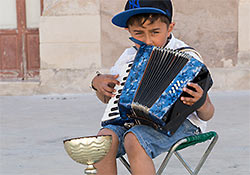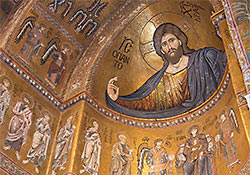Syracuse Cathedral (Duomo)
The cathedral in Syracuse (Siracusa) was built by bishop Zosimo in the 7th century over the Temple of Athena (5th century BC). This was a Doric temple with columns that still can be seen incorporated in the walls of the current church. The roof of the nave is from Norman times, as well as the mosaics in the apses. The façade was rebuilt (1725–1753) by Andrea Palma (1664–1730), with statues by Ignazio Marabitti (1719–1797). The most interesting pieces of the interior are a font with marble basin (12th–13th century), a silver statue of Santa Lucia by Pietro Rizzo (1599), a ciborium by Luigi Vanvitelli (1700–1773), and a statue of the Madonna della Neve ("Madonna of the Snow", 1512) by Antonello Gagini.
The Magnificent Cathedral (Duomo) in Syracuse
Syracuse Cathedral
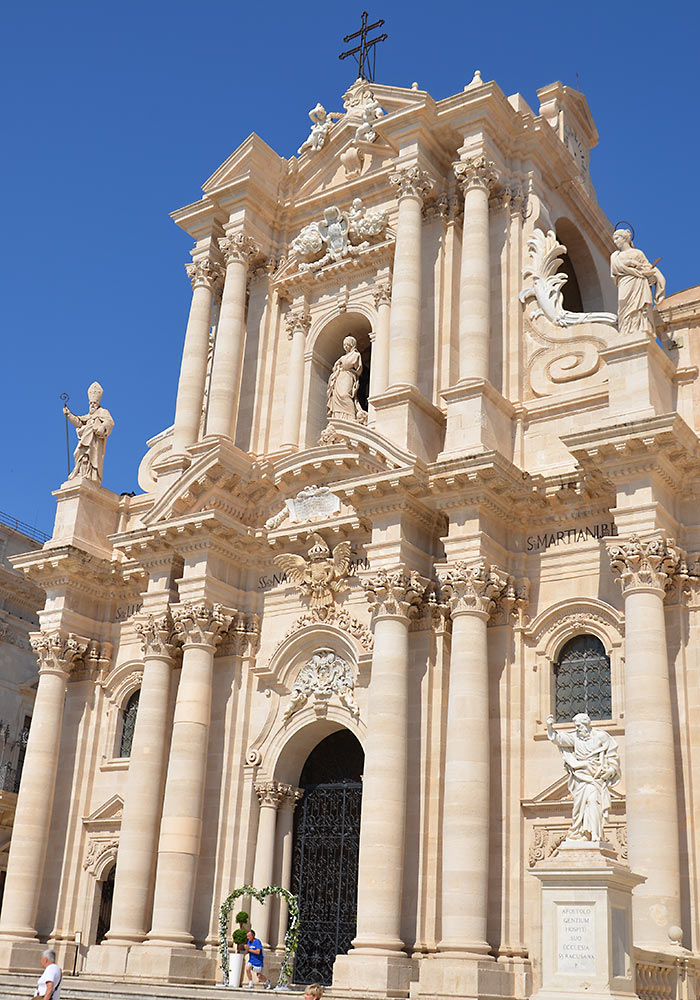
Photo: Torild Egge
Il Duomo: Statue of St Peter
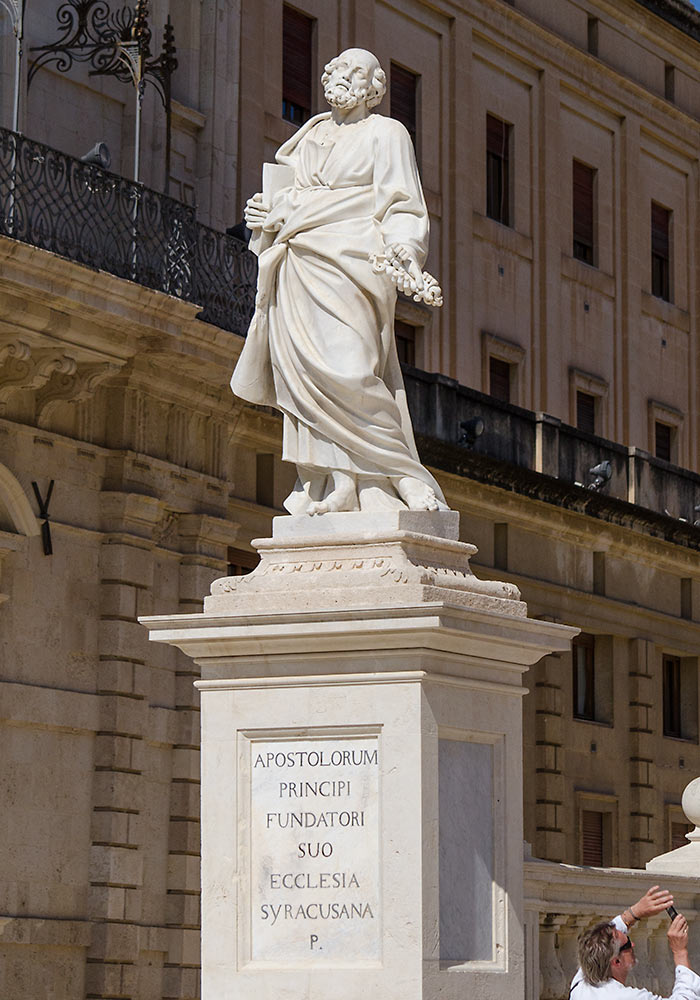
Photo: Per-Erik Skramstad / Wonders of Sicily
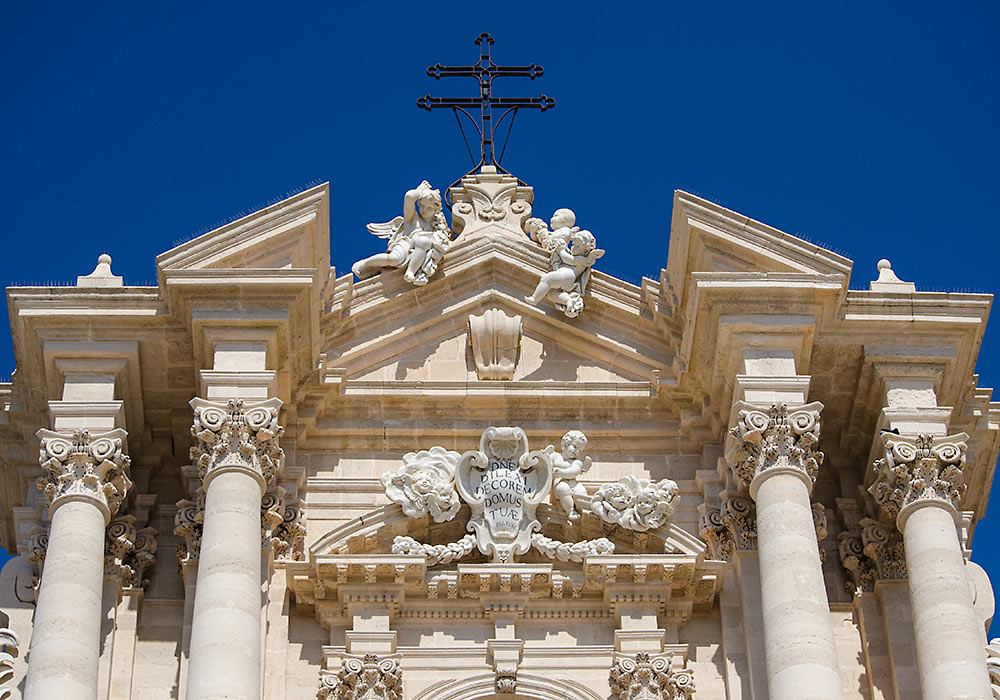
The facade of the Cathedral in Syracuse, a powerful Sicilian-Baroque composition erected in 1728-54. It was designed by Andrea Palma.
Photo: Per-Erik Skramstad / Wonders of Sicily
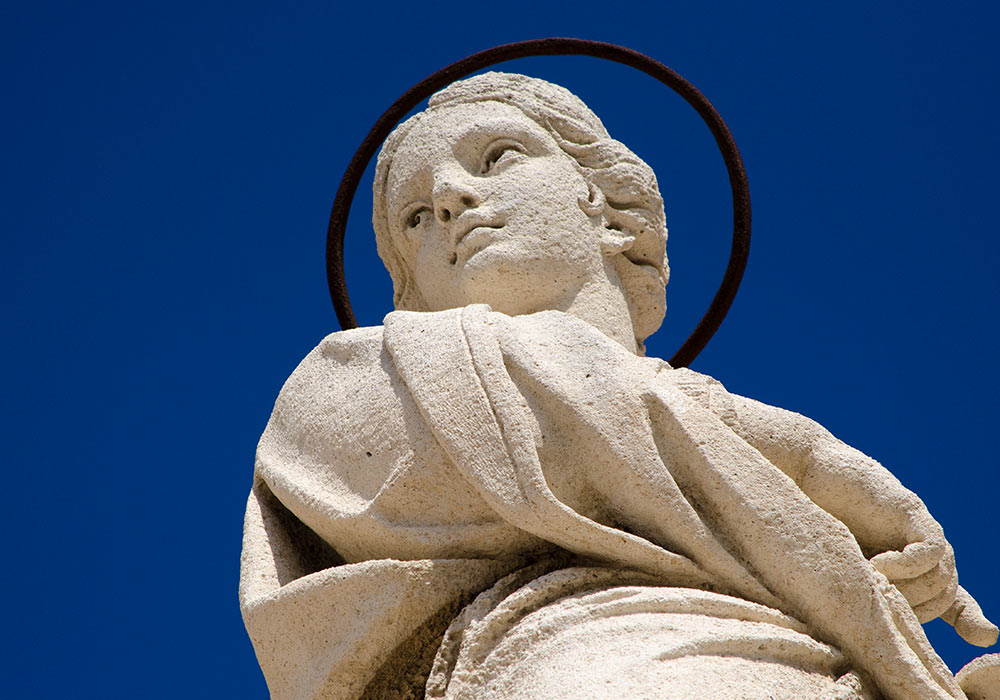
The statue of Santa Lucia (Saint Lucy).
Photo: Per-Erik Skramstad / Wonders of Sicily
As a young girl, Lucia was martyred for her Christian faith during the persecutions of the Roman emperor Diocletian in 304. The Diocletianic Persecutions, lasting from 303 to 311 was the Roman empire's last, largest, and bloodiest official persecution of Christianity.
According to the legend, Lucia's eyes were torn out and later healed by God. Lucia is often pictured holding two eyes on a dish. In 1039, Lucias body was taken to Byzantium, and later to the Church of S. Geremia in Venice. To mark 1,700 years from her death, Lucia's body was returned to Syracuse for one week, arriving on 15 December 2004, welcomed by a large crowd. (For more info, see Jeremy Dummett's excellent book Syracuse, City of Legends).
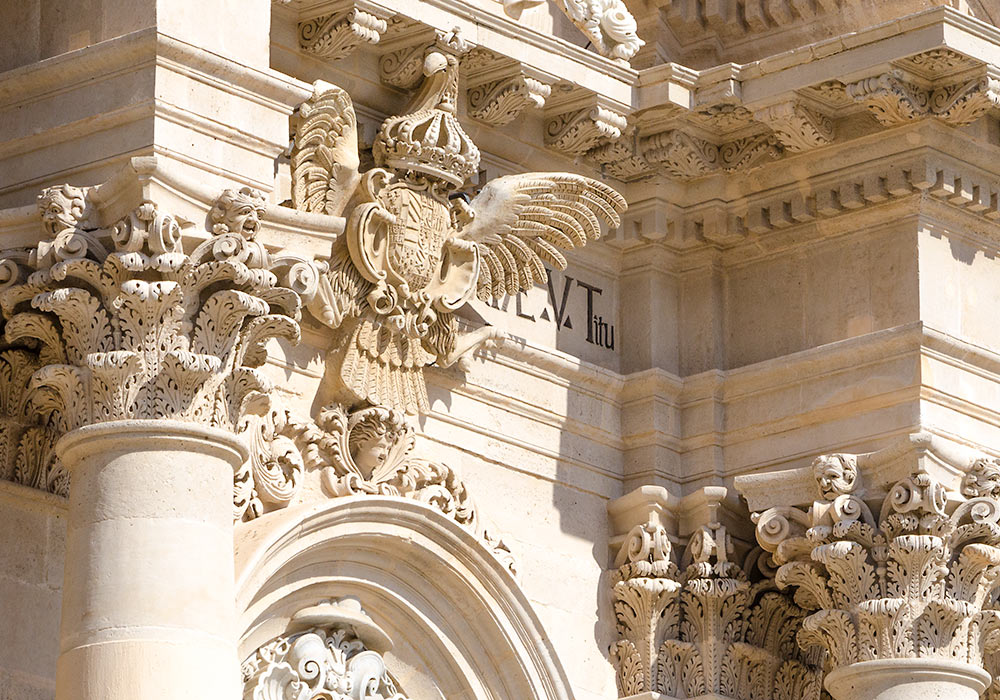
Detail of the magnificent facade of the cathedral in Syracuse (designed by Andrea Palma).
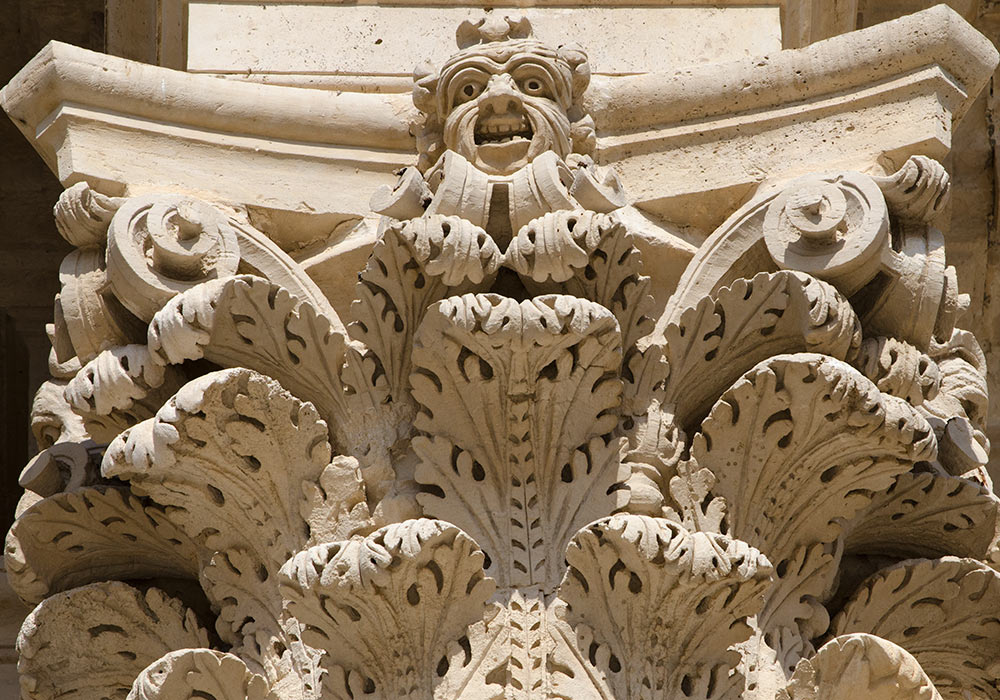
Detail of the decorative ornaments of the baroque cathedral in Siracusa.
The Syracuse cathedral anno c. 1907
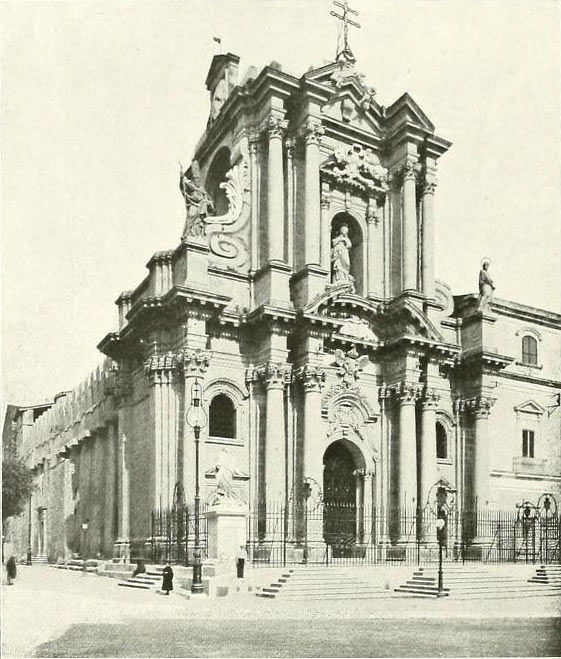
Syracuse Cathedral anno 2014

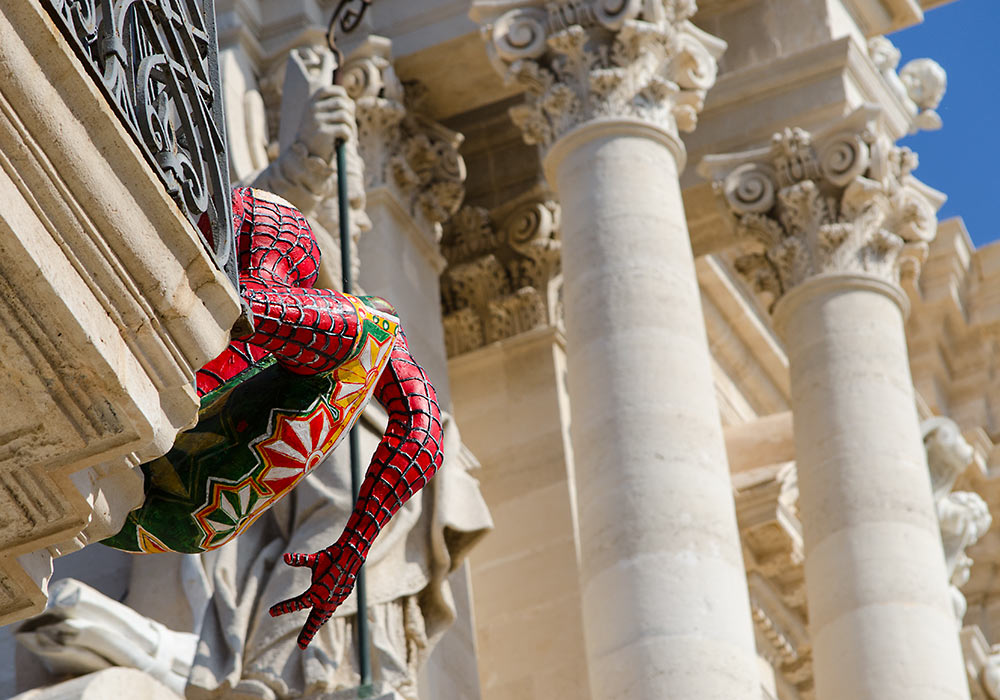
New and old: Spiderman and the cathedral in Syracuse behind him.
Photo: Per-Erik Skramstad / Wonders of Sicily
The distance between Siracusa and some other cities in Sicily
Siracusa-Agrigento 217 km
Siracusa-Catania 66 km
Siracusa-Cefalù 249 km
Siracusa-Modica 72 km
Siracusa-Noto 38 km
Siracusa-Palermo 277 km
Siracusa-Ragusa 90 km
Siracusa-Taormina 118 km
Siracusa-Trapani 375 km
Here you'll find more photos from Sicily:
Sicily: Some geographical names in Italian, Sicilian, English, Latin and Greek
- Agrigento (Sicilian: Girgenti, Ancient Greek: Akragas (Ἀκράγας), Latin: Agrigentum, Arabic: Kirkent or Jirjent)
- Agrigentum, Latin for Agrigento
- Akragas (Ἀκράγας), Ancient Greek for Agrigento
- Àsaru, Sicilian for Assoro
- Assorus, Latin for Assoro
- Assoros, Greek for Assoro
- Baarìa, Sicilian for Bagheria (also the title of a film by Giuseppe Tornatore)
- Balarm, Arabic for Palermo
- Butirah, Arabic for Butera (one of the largest cities in Arab Sicily)
- Càccamu Sicilian for Caccamo
- Castrogiovanni (until 1926 Enna was known as Castrogiovanni)
- Castrugiuvanni, Sicilian for Enna
- Cefalù (Sicilian: Cifalù, Greek: Κεφαλοίδιον, Diod., Strabo, or Κεφαλοιδὶς, Ptol.; Latin: Cephaloedium, or Cephaloedis)
- Cephaloedium or Cephaloedis, Latin for Cefalù
- Cifalù, Sicilian for Cefalù
- Egesta, Greek for Segesta
- Enna (Sicilian: Castrugiuvanni; Greek: Ἔννα; Latin: Henna and less frequently Haenna). Until 1926 the town was known as Castrogiovanni.
- Girgenti, Sicilian for Agrigento
- Henna / Haenna, Latin for Enna
- Hyspicae Fundus, Latin for Ispica
- Ispica (Sicilian: Spaccafurnu, Latin: Hyspicae Fundus)
- Jirjent, Arabic for Agrigento (also: Kirkent)
- Kefaloidion or Kefaloidis (Κεφαλοίδιον / Κεφαλοιδὶς), Greek for Cefalù
- Kentoripa, ancient Greek for Centuripe
- Kirkent, Arabic for Agrigento (also: Jirjent)
- Noto (Sicilian: Notu; Latin: Netum)
- Notu, Sicilian for Noto
- Netum, Latin for Noto
- Palermo (Sicilian: Palermu, Latin: Panormus, from Greek: Πάνορμος, Panormos, Arabic: Balarm, Phoenician: Ziz)
- Palermu, Sicilian for Palermo
- Panormos (Πάνορμος), Greek for Palermo
- Panormus, Latin for Palermo (from Greek: Πάνορμος, Panormos)
- Sarausa, Sicilian for Siracusa
- Selinous, Greek for Selinunte
- Selinus, Latin for Selinunte
- Siggésta, Sicilian for Segesta
- Siracusa (English: Syracuse, Latin: Syracusæ, Ancient Greek: Syrakousai (Συράκουσαι), Medieval Greek: Συρακοῦσαι, Sicilian: Sarausa)
- Spaccafurnu, Sicilian for Ispica
- Syracuse, English for Siracusa
- Syracusæ, Latin for Siracusa
- Syrakousai (Συράκουσαι), Ancient Greek for Siracusa
- Syrakousai (Συρακοῦσαι), Medieval Greek for Siracusa
- Taormina (Sicilian: Taurmina, Greek: Ταυρομένιον Tauromenion, Latin: Tauromenium)
- Taurmina, Sicilian for Taormina
- Tauromenion (Ταυρομένιον), Greek for Taormina
- Tauromenium, Latin for Taormina
- Terranova is the old name for Gela (the fifth largest town in Sicily)
- Ziz, Phoenician for Palermo


